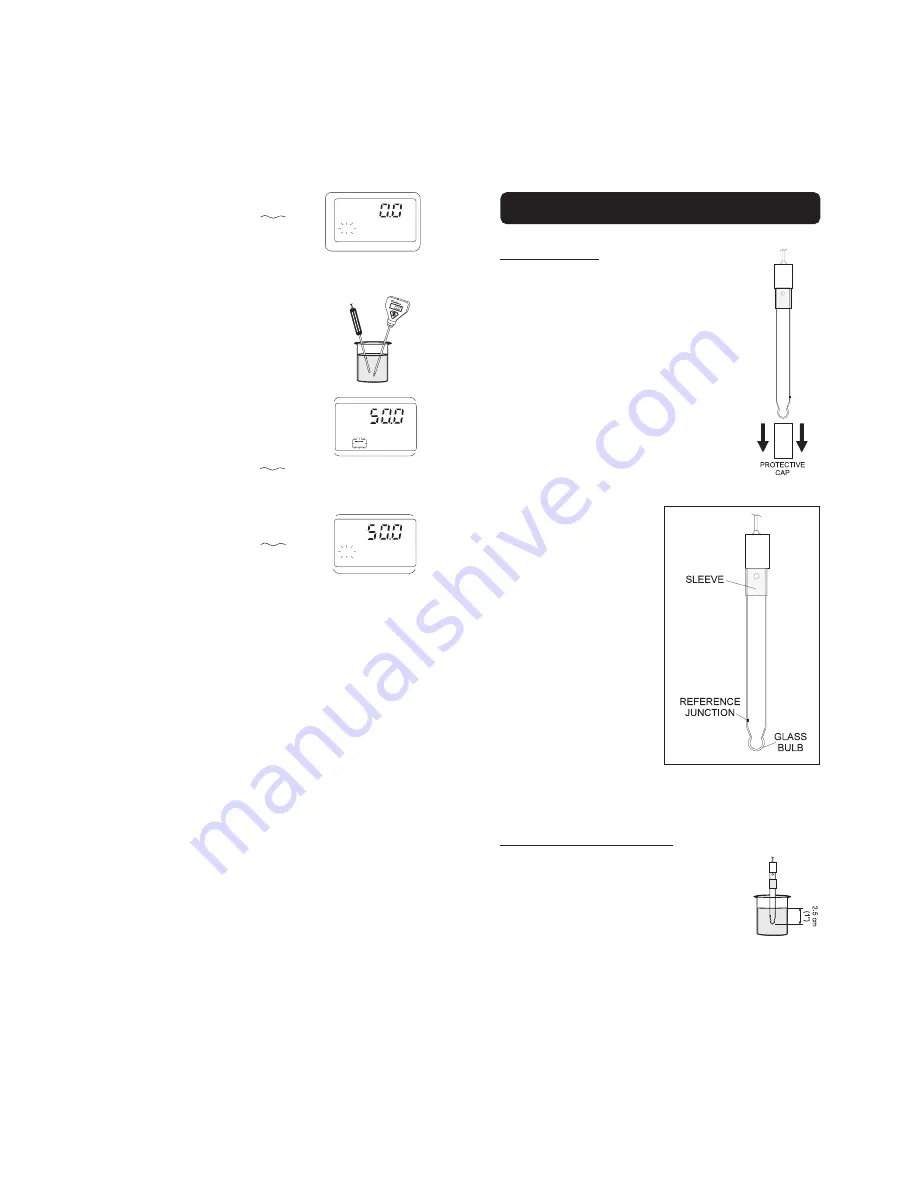
23
22
FC300B CONDITIONING & MAINTENANCE
PREPARATION
Remove the protective cap.
DO NOT BE ALARMED IF ANY
SALT DEPOSITS ARE PRESENT.
This is normal with sodium electrodes
and they will disappear when rinsed
with water.
During transport tiny bubbles of air
may have formed inside the glass
bulb. The electrode cannot function
properly under these conditions.
These bubbles can be removed by
"shaking down" the electrode as you
would do with a glass thermometer.
If the bulb and/or junction
are dry, soak the elec-
trode in HI 7081 (NaCl
30.0 g/L) solution over-
night before use with
HI931100. Soak it in
HI 7086 (Na 23 g/L) solu-
tion overnight before use
with HI 931101.
If the electrolyte solution
is more than 1 cm (½")
below the filling hole, add
HI 8093 1M KCl+AgCl
electrolyte solution.
Shift downwards the rub-
ber sleeve during mea-
surements and calibra-
tion.
SODIUM MEASUREMENT
Rinse the sodium electrode tip with
some of the sample to be tested,
then immerse the tip (approx. 2.5
cm /1") in the sample and stir gen-
tly.
• When the input value be-
comes stable, the "
"
symbol disappears and
"CON" will start blinking.
Press the CFM key to confirm the calibration
value.
• Immerse the temperature
probe into the 50°C (122°F)
bath.
•
Press the CAL key to dis-
play the "0.0°C" and then
press the BUF key to se-
lect "50.0°C". "CAL" and
"BUF" symbols. "
"
symbol will blink for a few
seconds.
• When the input value be-
comes stable, the "
"
symbol disappears and
"CON" will start blinking.
• Press the CFM key to confirm the calibration
value.
• The calibration is now complete.
• Turn the meter off and on again to return to the
normal mode.
°C
50°C
(122°F)
°C
CON
BUF
CAL
°C
°C
CON



































